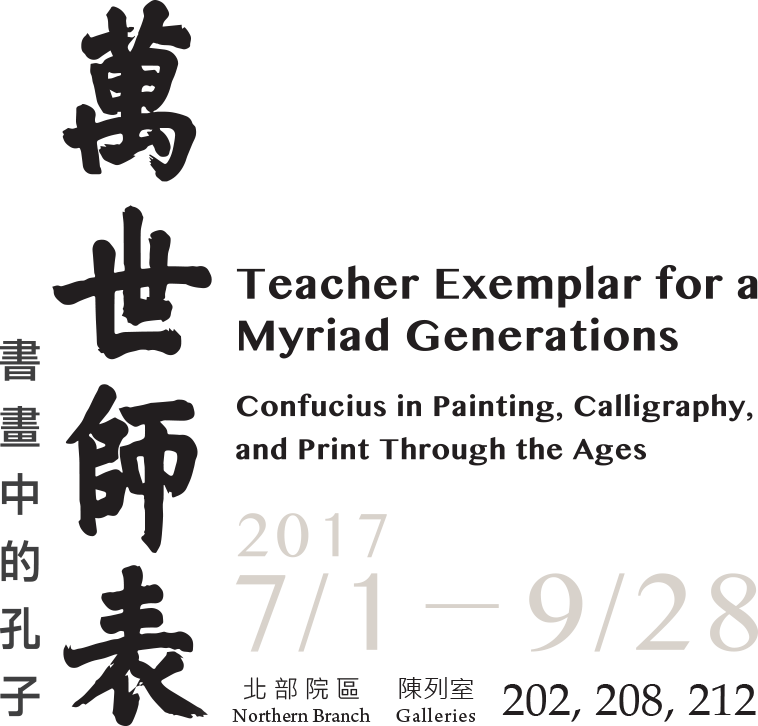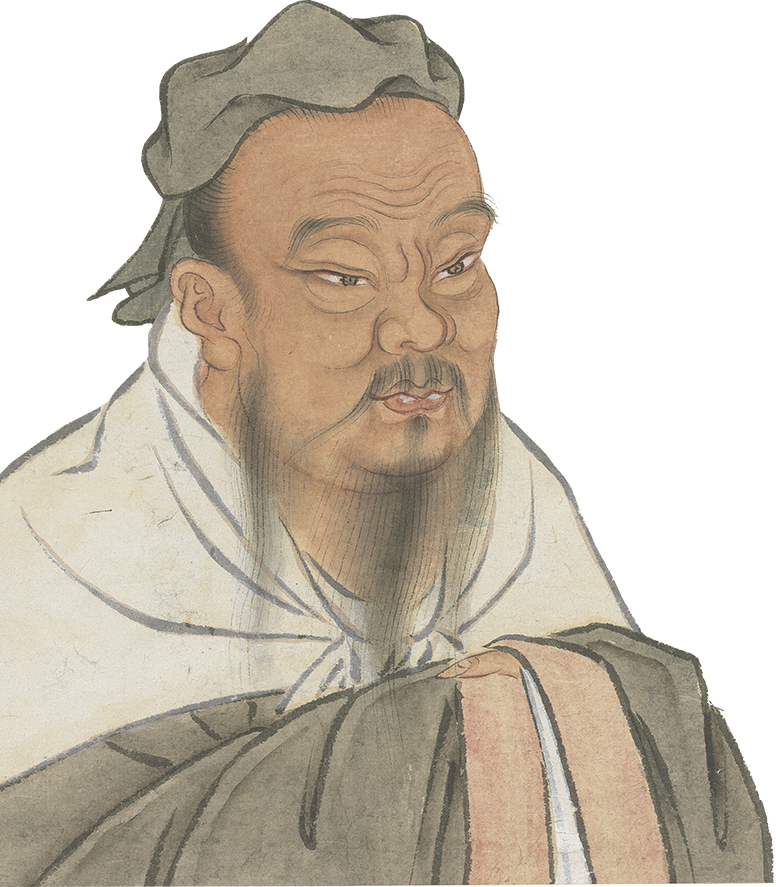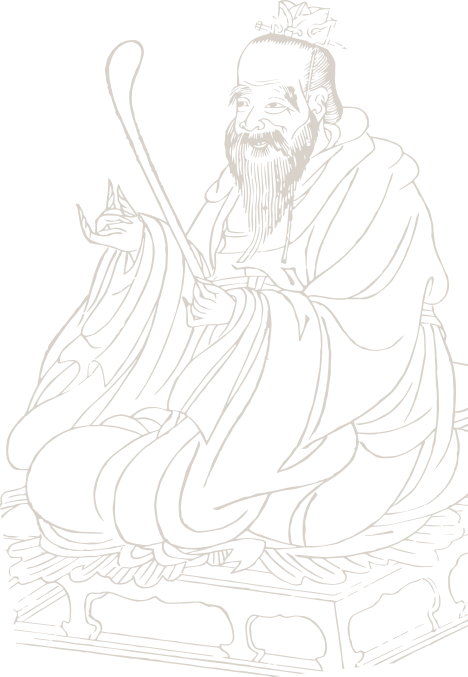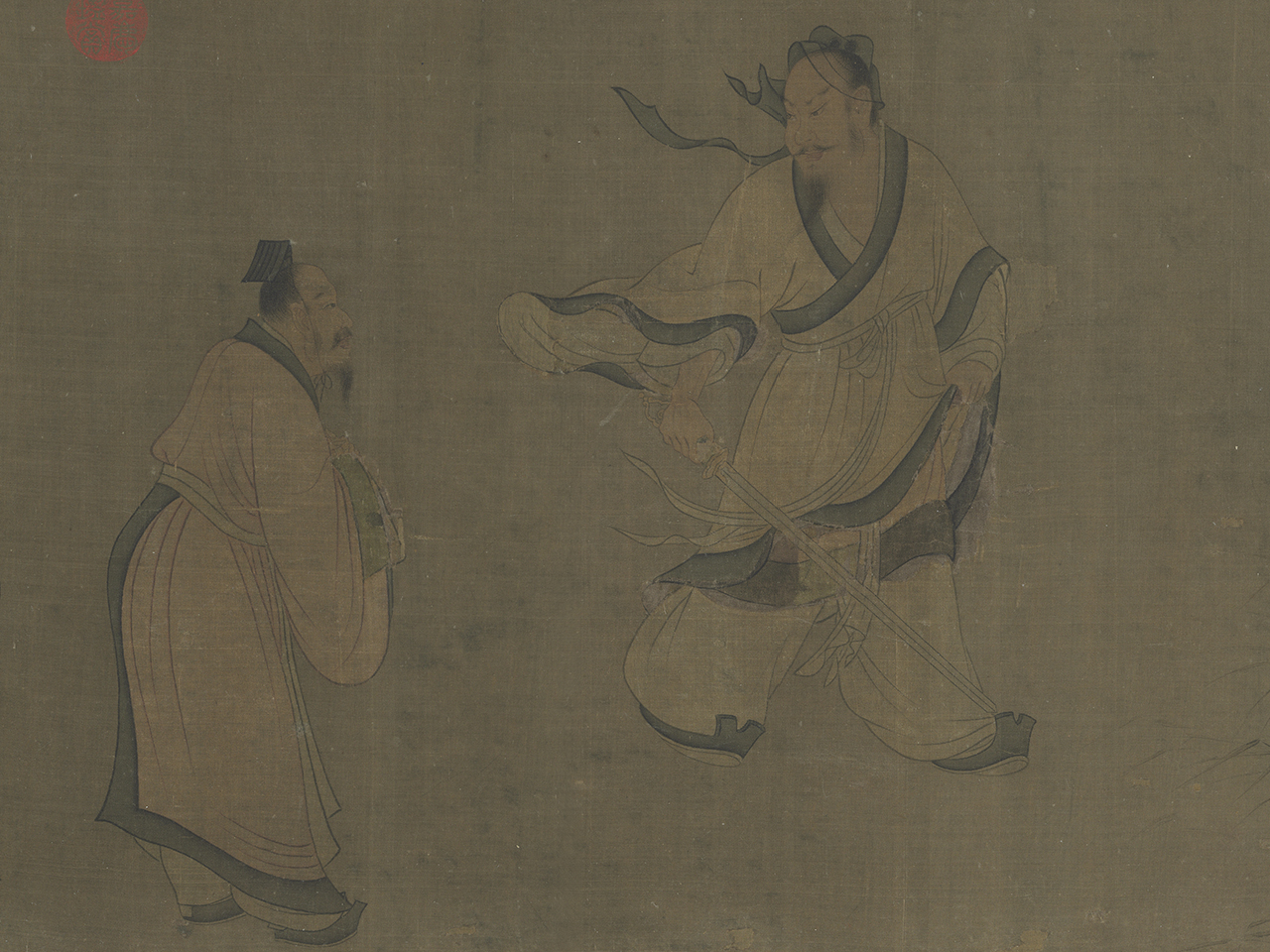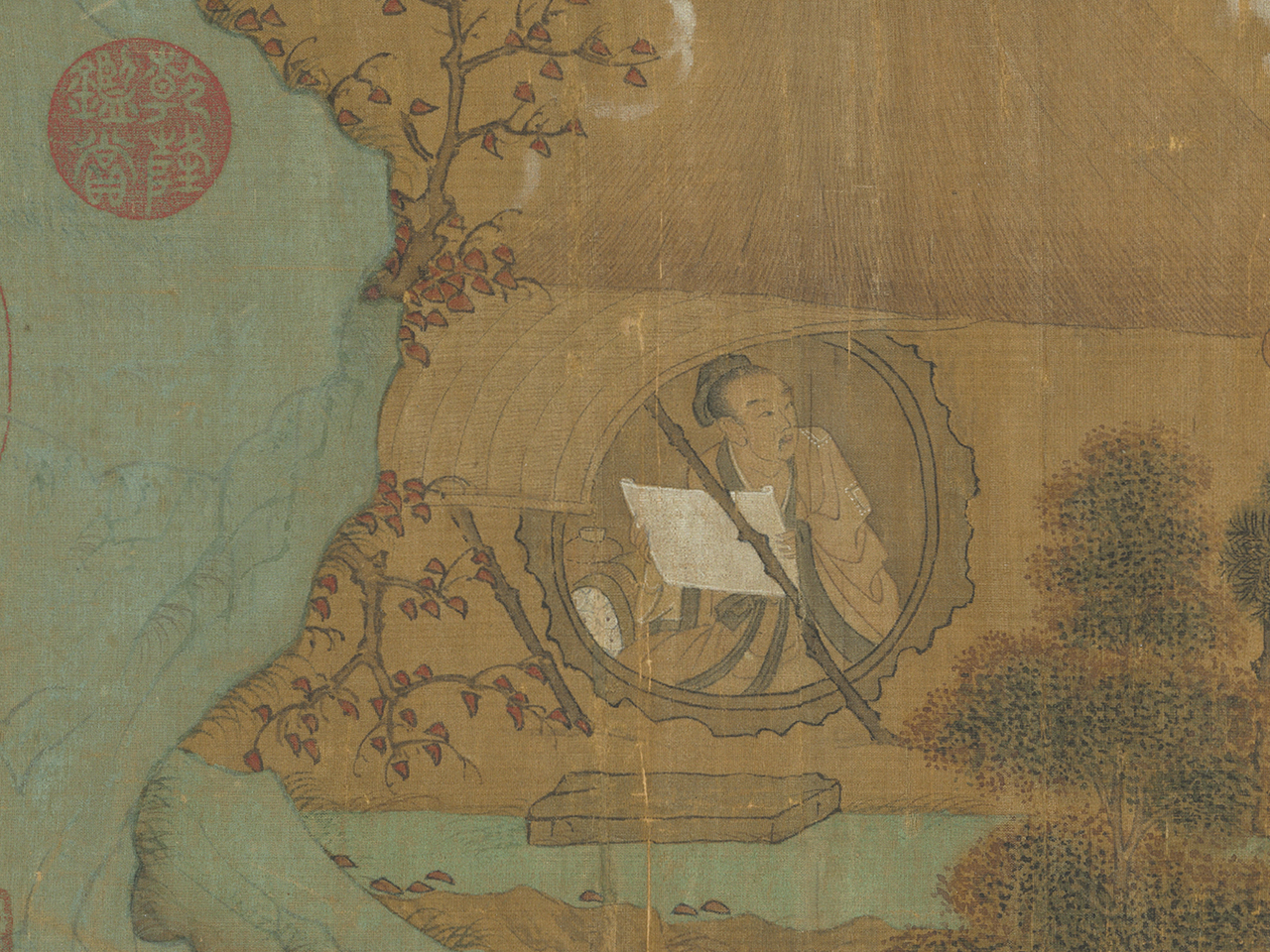Starting from the Western Han period, the ideas of Confucius became increasingly emphasized by rulers. The government promoted Confucian ethics and virtues for cultivating moral character and adjusting and maintaining the five norms of interpersonal relationship in Chinese society: ruler and subject, father and son, elder and younger brother, husband and wife, and between friends. This idea served as a spiritual guide for scholars to help govern the country and as an important force for maintaining social order. Figures that Confucius admired such as the courageous Bian Zhuangzi, ancient verses in The Book of Poetry, and stories about Confucius' disciples are among the Confucian contents that have been illustrated in painting and print over the centuries.
Bian Zhuangzi Stabbing a Tiger
- Anonymous, Song dynasty (960-1279)
- Handscroll, ink and light colors on silk, 39 x 169.1 cm
Bian Zhuangzi, a Grand Master from the city of Bian in the state of Lu (1027-250 BCE), was renowned for killing two tigers in one move. When the state of Qi heard of this, they dared not attack Lu. The story that this handscroll illustrates can be found in Strategies of the Warring States and "Exemplary Biography of Zhang Yi" in Records of the Grand Historian. The main point of the story is similar to the fable of the snipe and an oyster, in which both struggled to hold onto each other and refused to yield, resulting in their easy capture by a passing fisherman.
In the story here, an ox had died on the grass and two tigers came to fight over the corpse. Bian Zhuangzi took a sword to kill the tigers, but an advisor stopped him, saying the tigers would fight until one died and the other was wounded and could be easily killed. Bian took his advice, waited, and easily finished off the surviving tiger. At the end of the scroll are six figures responsible for the sword, staff, and other implements of Bian. The painting bears no seal or signature of the artist, but the fine yet strong brushwork for the struggling tigers and the courage of Bian Zhuangzi are all in an archaic manner of the Song dynasty, creating for a dynamic scene.
In "Book 14, Xian Asks" of The Analects of Confucius, Confucius answers a question posed by Zilu, citing the courage of Bian Zhuangzi. Both Zilu and Bian Zhuangzi were natives of the city of Bian, illustrating the idea of filial piety, military valor, or some customs of the area.
Window of Broken Pottery
- Zhao Mengfu (1254-1322), Yuan dynasty
- Handscroll, ink and colors on silk, 27.1 x 100.5 cm
Zhao Mengfu (style name Zi'ang, sobriquet Songxue daoren) was gifted at writing poetry and prose with pure lyricism. He also promoted revivalism in painting and calligraphy in the manner of the Tang and Song dynasties, becoming a model for later generations.
The painting illustrates the story of Confucius' disciples. One day, Zigong visited the residence of Yuan Xian, who lived in a humble hut with mulberry wood supports and a window made from broken pottery. It illustrates the idea of how a true gentleman takes joy in the Way and not material possessions, the story also appearing in "Exemplary Biographies of the Disciples of Zhongni (Confucius)" in Records of the Grand Historian. Duanmu Ci, style name Zigong, was a native of Wei and 31 years younger than Confucius. He became wealthy as a merchant and went on to serve as a statesman in Lu. On the other hand, Yuan Xian, a native of Song 26 years younger than Confucius, was poor but took joy in studying the Way in reclusion.
The painting here is done without texture strokes for the mountains and landforms, featuring only precise outlines filled with blue-green coloring. The brushwork for the drapery lines of the figures is fluid yet powerful in the archaic manner of the Tang dynasty. In the lower right corner of the painting is the character "suo 索" from the "Thousand-Character Essay" used as an accession number by Xian Yuanbian (1525-1590) in the Ming dynasty. There is also an inscription of his that reads, "Remounted at the Tianlai Pavilion in the eighth lunar month during autumn in the 31st Jiajing year of the Ming (1558)" and his record for the "original price: 50 taels."
